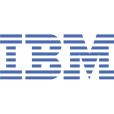 Results of a laboratory study presented on Thursday, April 26 at the spring meeting of the American Rhinologic Society (ARS) suggest that pressurized irrigation of the sinuses in conjunction with a specially designed irrigation solution may offer new options to reduce bacteria associated with chronic rhinosinusitis (CRS).
Results of a laboratory study presented on Thursday, April 26 at the spring meeting of the American Rhinologic Society (ARS) suggest that pressurized irrigation of the sinuses in conjunction with a specially designed irrigation solution may offer new options to reduce bacteria associated with chronic rhinosinusitis (CRS).The study, presented by Martin Desrosiers, M.D., associate clinical professor in the Department of Otolaryngology and Allergy at Montreal General Hospital, McGill University in Montreal, Canada, showed a large reduction of very robust and highly adherent bacterial colonies in a laboratory model. Two strains of bacteria, pseudomonas aeruginosa and staphylococcus aureus, were clinically isolated from CRS patients who had poor outcomes following functional endoscopic sinus surgery (FESS). Authors of the study also received the ARS Basic Science Research Award, which was presented to them at the ARS conference.
The bacterial strains were grown into robust bacterial colonies and treated with a variety of commonly used therapies including antibiotics and hypertonic saline. These existing therapies were compared to static and pressurized application of a new irrigation solution under development at Medtronic. Of the S aureus and pseudomonas bacterial colonies grown in this model, respectively 99.98% and 99.999% of the bacteria were removed by the pressurized application.
Traditional Treatment, Emerging Theories and Product Development
Established theory among Ear, Nose, and Throat (ENT) surgeons is that CRS and chronic otitis media with effusion (COME) are inflammatory disorders. Traditional treatments include surgery to ventilate affected areas in an attempt to reduce or eliminate inflammation. However, recent research suggests that CRS and COME are actually chronic infections1, and that the chronic inflammation which accompanies them is a byproduct of the diseases rather than the underlying cause. Specifically, certain strains of bacteria are highly resistant to host defenses and antibiotic treatment, and, as the bacterial colonies persist, they produce toxins that cause chronic inflammation. Based on this mechanism, Medtronic began developing new treatment options for the disruption and removal of bacterial colonies.
Mechanical disruption is one of the best mechanisms for removal of bacterial colonies, and the effect is often enhanced with a detergent. A common example would be brushing one’s teeth. Cavities in the teeth are caused by bacterial colonies in the mouth. Thoroughly brushing the teeth with toothpaste serves to remove the bacterial colonies and prevent decay.
Special irrigation devices for ENT under development by Medtronic adopt a similar approach for the treatment of CRS and COME. Patent applications have been filed on a system that irrigates the nose with pressure, analogous to that used in the dentist’s office or in the treatment of chronic orthopedic wounds. To assist in the treatment, Medtronic scientists developed and evaluated a large variety of irrigating solutions. A citric acid zwitterionic surfactant provided the best results during internal testing. A patent application has been filed on the surfactant also.
Study Results Suggest Improved Efficacy in Bacterial Removal
Researchers at McGill University in Montreal, Montana State and Medtronic collaborated to test the effectiveness of pressurized irrigation with the citric acid zwitterionic surfactant irrigating solution.
Bacteria isolated from failed surgical patients at McGill were sent to Montana State, grown into robust bacterial colonies, and treated with a number of static and dynamic irrigation solutions. Commonly used controls were compared to static and pressurized applications of the Medtronic surfactant. Control groups included many of the currently used irrigation solutions, including antibiotics (tobramycin and doxycycline), and salt water (isotonic and hypertonic saline).
When applied statically, none of the controls had any material effect on the bacterial colony. Conversely, dynamic application of saline reduced the number of bacteria 99.4% in both types of bacterial colonies. Static application of the surfactant reduced the number of bacteria in the colonies of S aureus and pseudomonas 99.66% and 99.87% respectively. The best results were achieved when surfactant was applied under pressure, where 99.98% and 99.999% of S aureus and pseudomonas were removed equaling a four- (10,000x) and five- (100,000x) log reduction, respectively.
Looking Forward
Given the positive results of the laboratory study, Medtronic is initiating a number of studies to further evaluate this technology. Several living tissue and safety studies are scheduled to start in the near future with subsequent submission for review by the FDA.
Additional information about Medtronic’s ENT product line can be accessed on the web at www.MedtronicENT.com














